Selecting the ideal baby crib involves considering the material used, as it significantly impacts the safety and welfare of your child. Among the available options, specific wood materials distinguish themselves for their outstanding characteristics.
This blog aims to examine the safest wood materials utilized in the production of baby cribs, highlighting their distinctive features and advantages. We will delve into various types such as pine, oak, maple, beech wood, rubber wood, cherry wood, MDF, and bamboo, unraveling the unique qualities that render each of these materials a dependable and secure choice for your baby's crib.
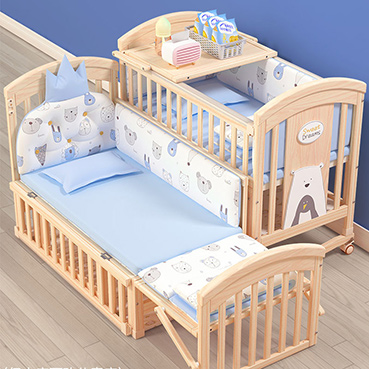
Pine wood is the safetest material for producing baby cribs due to several reasons. Firstly, it provides safety and stability, meeting the necessary standards for supporting a baby's weight. Additionally, pine wood is durable and less prone to cracking or splintering. Its affordability makes it a cost-effective option for manufacturers and consumers.
Pine wood is versatile, allowing for customization to match different nursery decors. When responsibly sourced, it can also be an environmentally friendly choice. Pine wood is a fast-growing wood with mature processing technology and is widely used in the furniture industry.
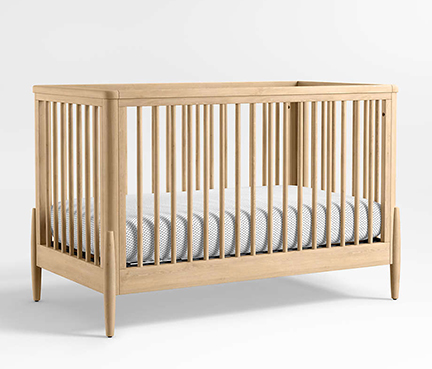
source: Pinterest
Choosing oak wood for making baby crib offers several benefits. Oak is known for its durability, making it a long-lasting option. Its strength ensures the crib can handle the wear and tear of daily use.
Oak wood is also resistant to warping, providing a stable and secure sleeping environment. Additionally, its attractive natural grain pattern and warm color add a touch of elegance to the nursery. Oak is a sustainable and environmentally friendly option.
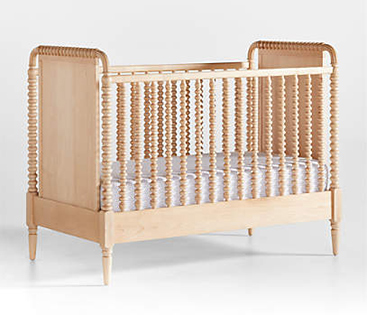
source: Google Image
Maple wood is a preferred material for baby cribs due to its durability, strength, and safety. It is known for its resistance to warping and cracking, ensuring a stable and secure crib. Maple wood is free from toxic substances and less likely to splinter or develop sharp edges, making it safer for babies.
Additionally, it offers aesthetic appeal with its natural beauty and versatility, allowing for various crib designs. Maple wood is sourced from renewable forests, promoting sustainability. When choosing a crib, prioritize safety, durability, and non-toxic materials while ensuring compliance with safety standards.

source: Google Image
Beech wood is a highly sought-after material for baby cribs, renowned for its superior safety features, non-toxic nature, stability, aesthetic appeal, and sustainability. Its strength and durability reduce the risk of splintering or breakage, ensuring a secure and dependable sleep environment for infants.
Furthermore, beech wood is typically non-toxic. Its inherent stability guarantees the structural integrity of the crib, effortlessly accommodating the weight and movements of a growing child. Moreover, its natural color exhibits an appealing charm that seamlessly harmonizes with nursery decor. Beech wood proudly earns its sustainability credentials by virtue of its fast growth and responsible harvesting practices.
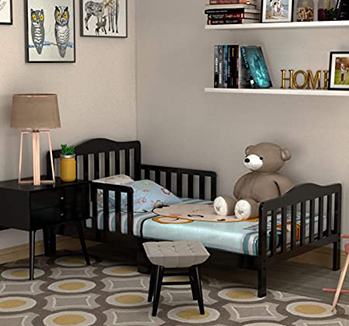
Rubber wood is widely favored for baby cribs due to its exceptional safety, durability, sustainability, availability, and aesthetic appeal. It is renowned for its non-toxic and safe nature, offering a healthy and secure sleeping environment for infants.
The wood's remarkable strength and long-lasting quality ensure reliable everyday use. Derived from the rubber tree, rubber wood maximizes resource utilization and minimizes waste. Its global availability guarantees a consistent supply for crib production. Moreover, rubber wood possesses an appealing appearance that can be customized to suit various nursery styles.

source: Pinterest
Cherry wood is widely favored for baby cribs because of its exceptional durability, safety features, aesthetic appeal, sustainability, and long-lasting nature. Renowned for its robustness and resistance to warping or cracking, cherry wood instills confidence in providing reliable support for a baby's weight.
Moreover, this wood is non-toxic and non-allergenic, ensuring utmost safety for infants. Its captivating rich tones and distinct grain patterns add a touch of natural beauty that enhances the overall decor of nurseries. Opting for sustainably sourced cherry wood aligns with environmental conservation efforts. Additionally, the wood's enduring quality facilitates prolonged usage.
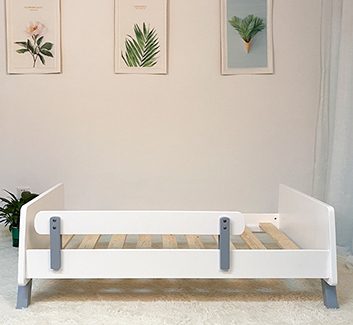
MDF (Medium-Density Fiberboard) is sometimes used as a material for baby cribs due to its safety, durability, affordability, versatility, and environmental considerations. Its smooth surface reduces the risk of harm to the baby, while its strength and resistance to warping make it durable.
MDF is cost-effective, allowing for more affordable cribs, and its moldability enables intricate designs. It is also environmentally friendly as it is made from recycled wood fibers. By using MDF, manufacturers can minimize waste since it can be cut and shaped with precision, resulting in fewer offcuts compared to solid wood.
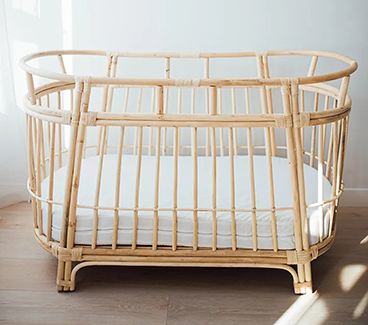
Bamboo is a highly favored material for baby cribs due to its sustainability, strength, safety, and aesthetic appeal. It grows quickly, making it an eco-friendly choice compared to slow-maturing hardwood trees. Despite its lightweight nature, bamboo is remarkably strong and durable, capable of supporting the weight of a baby. It is free from harmful chemicals and toxins, ensuring a safe environment.
Bamboo's resistance to moisture prevents mold and mildew growth, and its structural integrity remains intact over time. Additionally, its natural beauty enhances the overall aesthetic of a nursery, creating a calming atmosphere for the baby.
In conclusion, selecting the ideal wood material for a baby crib requires careful consideration of factors such as safety, durability, aesthetics, and sustainability. Whether you choose pine, oak, maple, beech, rubber wood, cherry wood, MDF, or bamboo, each option offers distinct advantages.
From the affordability of pine wood to the elegance of cherry wood, and the eco-friendliness of bamboo, there is a suitable wood material for every parent's preference. Remember to prioritize safety standards, opt for non-toxic finishes, and ensure responsible sourcing. By making an informed decision, you can provide your baby with a secure and stylish crib that meets their needs while promoting a healthy and sustainable environment.
If you want to expand your product range, source top-quality baby wood cribs directly from a leading China manufacturer Clafbebe.They offer a wide selection of baby crib designs, customizable options, and attractive wholesale pricing.